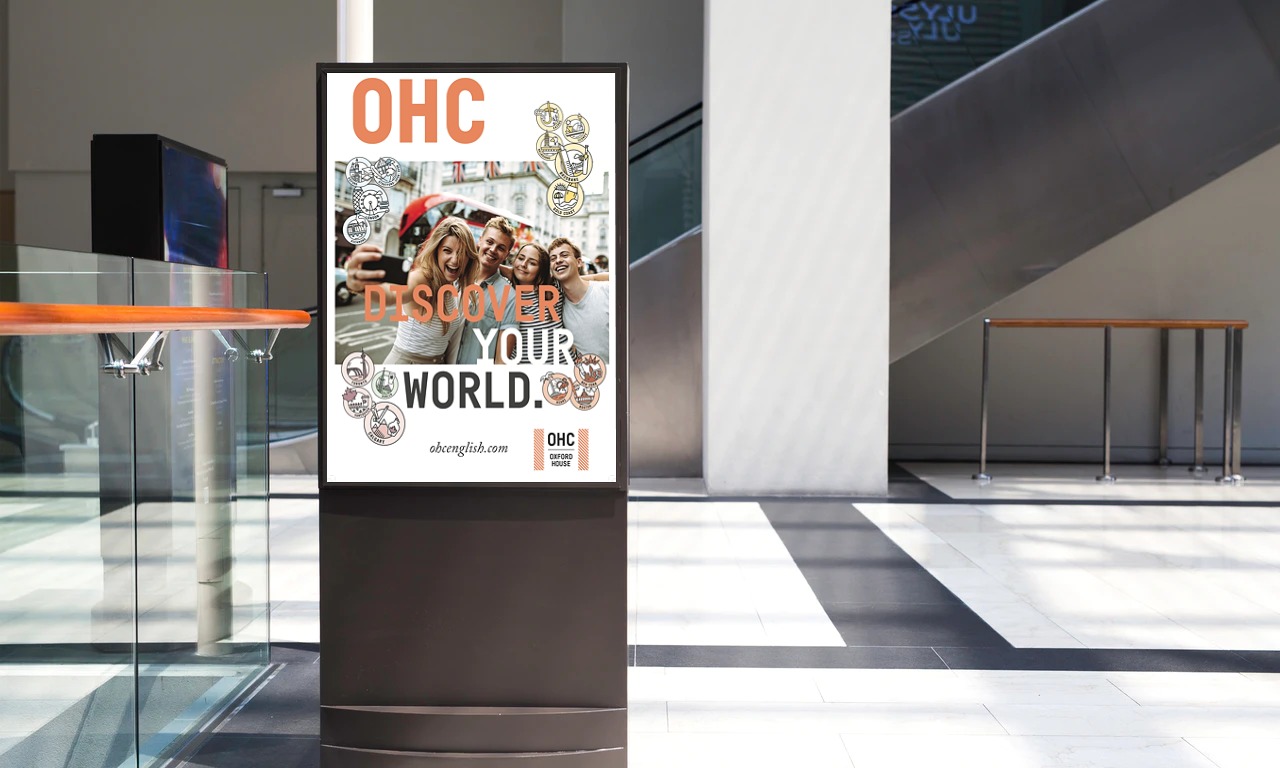…AND WHY DOES MY BUSINESS NEED IT?
In this article the team discuss with Brandfunk founder Emma White about why you should consider quality marketing materials to represent, build and grow your brand.

Let’s start with… what even is marketing collateral?
Any media used to showcase your products or services is classed as marketing collateral.
Also known as brand collateral, in this article we can refer to our retainer client OHC as a great example of a rebranding rollout that even included translation services.

What does it do?
It packs a punch!
Supporting your brand association, strategy, and products and services your marketing collateral should highlight who you are and the benefits of what you do.
Gone are the days of cheesy salesman, in cheap stuffy suits unashamedly displayed on their own life size banners at networking events and speaker engagements (well mostly!), your marketing collateral should aid quality advertising both online and in physical form.
Congruency across all collateral should be a priority, if you use Oxford House College as an example we did exactly this. you will note the aesthetics flow from one piece to another.

What types of marketing collateral could I use?
The choices for your business are endless, from banners and brochures to downloadable information products, if you are launching a campaign or considering a brand refresh some options include…
Banners
Blog posts
Business cards
Brochures
Downloadable material
E-books
Leaflets
Gift cards & vouchers
Gift guides
Product guides
Seasonal coupons
White papers

Digital collateral Vs. Physical collateral, what's better?
Neither! Both!
From pamphlets to banners, business cards to leaflets, having a tangible takeaway to support your sales efforts is pretty underrated in this age of digital downloads and social media handles, and yet time and time again the customer or client is proving they are seeking connection and for true brand sustainability your people want to be able to interact with your brand.
We particularly love the printed variety here at Brandfunk for this very reason, as we have seen many below par printed media at events and networking opportunities, communicating an amateur effort to an otherwise potentially strong brand.
We feel the DIY movement is a little to blame for this but also fast turnaround, low skills designers over promising and under delivering, and we know that there is so much more to your marketing collateral than dishing out low quality business cards that will underwhelm your potential customers.
Can you delve deeper into why a business would need physical marketing collateral in the age of digital?
Building relationships and connections face to face is key to form brand loyalty. In an age of digital, for the many advantages it brings, as humans we are seeking connections more than ever.
Marketing collateral plays a massive part in this.
Engagement, interaction, emotional response, plus our attention spans now require originality in an age of generic marketing.
Holding a piece of quality media in your hand is memorable on a sensory level, brands stir emotions so the possibilities with physical media are endless.

What issues do you predict when clients try to DIY their marketing collateral?
I love clients that give it a go, it’s a great attitude to have when building out your brand vision and if you are on a tight budget then why not DIY it if it serves a purpose. I find a lot of my clients have dabbled with Canva and it’s a great resource, the team still utilises free resources, we are so lucky in the digital space right now to have a range of tools for all budgets.
However, using Canva as an example we do come across a few amateur mistakes that really bring home the need for professional agency services. It has it’s uses for the beginner who wants or needs to produce quick, eye catching images but in my opinion this can only be for web/on-screen use.
Designing in Canva on a budget to produce digital brand imagery can help those particularly who are bootstrapping in the first stages of business growth – but here’s the thing – mainly for web/on-screen use only. For example, social media graphics, web banners, etc are all acceptable using this, even the odd downloadable PDF are fine for home printer use.
The problems start to rear their ugly head when artwork needs to be sent to professional printers.
Marketing materials such as business cards, brochures, pull up roller banners, flyers and exhibition artwork, cannot be designed in Canva without big problems. Printers will require a CMYK or spot colour file (depending on the press it is going to), bleed and cropmarks set, vector files will need to be sent for logos and all of a sudden your artwork is being thrown back at you, or even more sadly, causing you to miss your deadlines because the files you sent were unacceptable.
A low resolution PNG or JPEG will not be accepted by a printer (or indeed a designer if you are looking at them to help you).
The printer is talking about *.ai, *.eps, *.tiff *.pdf with cropmark files and you have no clue as to what they are or how to get them. Using Canva designs as the example here, they are typically in 72 dpi more or less, in RBG.
This is fine for web, but a massive no no for anything else.
Anything that isn’t appearing on a screen should be set up using industry software (Adobe Suite). Knowing the output for the final artwork is paramount before starting any design job. This makes sure it's set up right from the get-go for a quality product and brand.
Big shout out to Emma for taking the time to emphasise why businesses need to make sure their marketing collateral is created to industry standards to avoid wasted time, efforts and budgets when it comes to representing your brand!
From all the team at Brandfunk.



